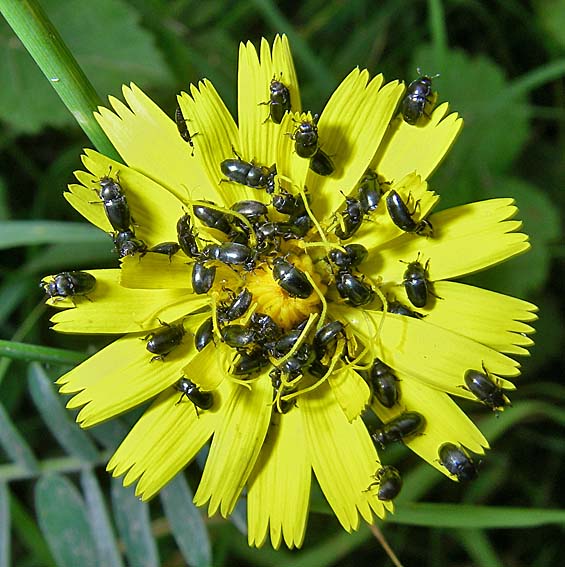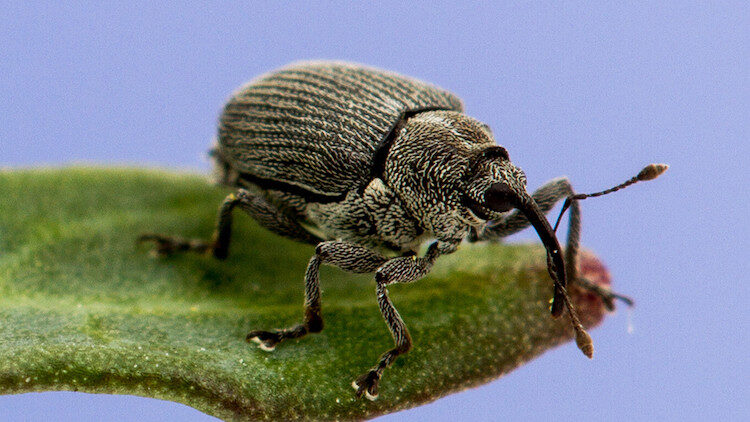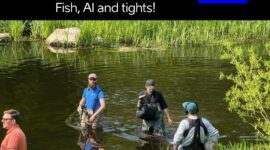The intensification of agriculture has reduced the share of semi-natural habitats in agricultural landscapes, negatively impacting overall biodiversity. Oilseed rape is one of the most important agricultural crops for food producers, but it is also an attractive food source for many arthropods. Oilseed rape is the target of numerous insect pests during the plant’s different growth stages, but the most important insects pests are the pollen beetle and the cabbage seed weevil.
Current pest control methods based on synthetic insecticides need to be replaced with new, environmentally friendly approaches that are in line with the Farm to Fork strategy. One sustainable pest control strategy is the spatiotemporal manipulation of field and having landscape elements in agricultural landscapes.
A doctoral thesis on oilseed rape pests was successfully defended by Silva Vilumets at the Estonian University of Life Sciences on 9 April. The thesis, titled ‘Sustainable Approaches to Oilseed Rape Pest Control: Steps Towards Integrated Pest Management’, emphasized the importance of monitoring species harmful to oilseed rape.
During the experiments conducted for the thesis, it was found that separating winter oilseed rape fields from those of the previous year by more than 500 metres significantly reduces the number of pollen beetles and cabbage seed weevils therein compared to those located closer. According to the findings, adjacent habitat (another crop, woody or herbaceous linear element) next to the focal fields had no effect on the number of pollen beetles in the oilseed rape fields during the green bud stage.
Furthermore, the study period (2014–2018) revealed that the number of pollen beetles during the green bud stage of oilseed rape plants did not exceed the threshold of the economic control criterion in any single year. The level of infestation was high in all years, reaching up to 90% and exceeding the effective natural level of pest control (min. 32%) during the experimental period.
It was found that the level of infestation is not dependent on the distance from the previous years’ oilseed rape field or on the adjacent habitat, but rather on the share of natural and seminatural habitats. To ensure effective pest control on oilseed rape fields, the proportion of seminatural habitats must be at least 20%.

During the preparation of the doctoral thesis, potential for the use of essential oils in controlling the cabbage seed weevil was also researched. Ceylon cinnamon and common cumin proved to be the most lethal to the cabbage seed weevil, but it was also lethal to beneficial parasitoid wasp adults and larvae. Thesis also empathies the need to monitor for species whose populations could rapidly increase under favourable environmental conditions, therefore resulting in severe crop damage. Ceutorhynchus sulcicollis, an oilseed rape plant stem-mining insect, is one such example. It had previously been spotted in Estonia in isolated cases, but was discovered in large numbers in 2020.
While this finding is interesting, it does not yet classify the weevil as a significant pest that requires immediate pest control measures. First and foremost, these findings highlight the importance of monitoring other species that could harm oilseed rape, especially in changing climate conditions.
The doctoral thesis includes valuable information on the biology of pests and their natural enemies, as well as practical crop rotation and pest control guidelines for food producers. The thesis underscores the importance of diverse landscapes and alternative control methods in achieving the key objectives of the European Union’s Farm to Fork strategy.
The thesis is available in the digital archive of the Estonian University of Life Sciences (EMU DSpace).
This article was originally published on the webpage of the Estonian University of Life Sciences.
Read more from our webpage about how Genome editing contributes towards developing safe and sustainable food systems!
 Back
Back



